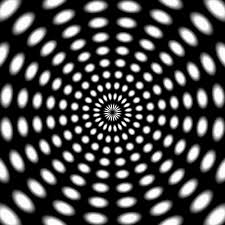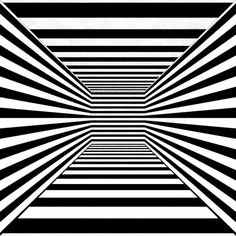|
(2019
final exam assignment) Model final exam answers 2019 (Index) Essay 3: Web Highlights |
 |
Brandon Burrow
The
Human/Technology Dichotomy
In my web-highlights
review, I chose to focus on the various ways that past students have compared
low-tech and high-tech futures in their course content essays. One of the most
intriguing frameworks for comparing these two types of future stories comes from
Laura Wilson, who noticed a “diametrically synchronized scale of morality
between High Tech and Low Tech” in which she found “the more High Tech a story
the more that society seems to have abandoned its humanity, and the more Low
Tech scenarios show a return to simple, moralistic life” (para. 1). The other
essays I read from 2017 by Clark Omo and Katie Morin also seem to notice a link
between technology and loss of humanity that I feel makes Wilson’s scale of
morality a good way to organize this essay with as I review student submissions
and go through what I learned from each.
Wilson contends that when
tech is high, morality/humanity is low, and there is plenty of evidence to
support her claim in the essays I read. She cites “Johnny Mnemonic” and its
emphasis on violent technology as indicating that the story possesses “little in
the way of a governing morality,” as the primary use of technology in the story
is the immoral act of murder (para. 2). Morin’s indication that “Johnny
Mnemonic” is a high-tech tale is in the encroachment of technology upon nature
as it is a story “where technology and humanity have become so far intertwined
with one another that the two become nearly indistinguishable” (para. 2). In
Morin’s view humanity is erased by technology. This is evidenced by the
character Dog getting teeth implants to become more frightening and beastly
rather than human. Technology usurping the organic through implants and body
mods is a trope of high-tech speculative fiction. Omo also notices this
technological coup when he talks about how humanity is ignored quite literally
in the high-tech story “The Logical Legend of Heliopause and Cyberfiddle” as
“technological terms are the only ones capable to describe a person in this
story; no mentioning of eyes, hair, physique, and such” (para. 2). I had not
realized this detail and it was interesting to see Goldstein’s choice to exalt
technology to the point where people are described as if they were models of a
new machine rather than human beings.
In contrast to the morally
suspect elements of high-tech, low-tech stories tend to have more humanity and
respect for nature and culture as I learned in my web highlight review. As a
result of an apocalyptic outbreak of disease, the characters in Octavia E.
Butler’s “Speech Sounds” are thrown back into a low-tech society. The primary
thing that Morin sees as making this low-tech society full of humanity is the
way in which the characters interact. Since disease has inhibited most people’s
ability to talk or hear, human society has returned to using the most archaic
form of communication, signs and symbols, and must give each other the benefit
of the doubt in communication (para. 3). Rye seeks to establish human
connections, even when doing so puts her at risk as it does when she reveals
that she can speak to the kids at the end of the story even though it could get
her killed. In Butler’s low-tech world, there is evidence that people are
struggling to re-establish basic human connections rather than trying to further
divide themselves with technology.
In some of the stories we
read this semester, high- and low-tech converge and human sentimentality clash
in a cold future with mixed results as the authors I read point out. Wilson
notes that “Drapes and Folds” allows high-tech and low-tech futures to co-exist
because “low tech values are the underlying theme of this high-tech story”
(para. 3). Wilson’s insight was new to me and I found it interesting. When the
NewSociety enforcers come to confiscate Pearl’s fabrics, which Wilson identifies
as her individuality, it is her “half roboid granddaughter, Xera,” that
safeguards some shred of humanity by concealing Pearl’s kimono-stitched
drawstring bag from them (para. 3).
Technology and humanity do
not fuse so well in Anari Oliver’s opinion as she notices that in “The Onion and
I,” tech is depicted as being incompatible with true human experience. It is
established that the virtual reality the characters participate in cannot truly
simulate an onion or the tactile and sensual information that a real onion
elicits in a human being (para. 2). Even though there is dissonance between
technology and human experience as Oliver points out, while reading Morin’s
thoughts on the story I was struck by her observation that “the two realities
manage to coexist simultaneously, which offers a nice balance—one that joins
together the world of one’s mind with the world of one’s body” (para. 4).
This dichotomy between mind and body, technology and organic matter is
further strengthened by Oliver’s observation in “Drapes and Folds” that as
Pearl’s friend becomes more in line with the dystopian leaders of the universe
her brain literally hardens, changing from organic low-tech human computing to a
hard technological thought processor, which was a fascinating detail that Oliver
picked up on that I did not (para. 3).
The consensus among the
essays I read is that Ecotopia is generally seen as the harmonious blend between
high- and low-tech stories that preserves humanity. Wilson argues that stories
that fit under the ecotopia umbrella like “Chocco” and “House of Bones” contain
the most humanity since the characters in the stories respect past cultures. In
“Chocco” they remember the history of the “machine-people” so as not to repeat
their mistakes, but it is Jon who speaks about the ancestors in a relatively
un-biased way that wins the competition. Omo shares Wilson’s feelings that on
the value of the genre when he writes: “Ecotopia strives to find balance, which
is why in the society of “Chocco,” the people still make use of technology
insofar that it does not overwhelm or threaten them” (para. 6).
Responsibility and respect
are themes of Ecotopia. In “House
of Bones,” Wilson points out passages where the narrator compliments the
intelligence and kindness of the ancient people who took him in despite the fact
that he is nearly useless in their world (para. 5). Omo writes that “it seems
that Ecotopia does not admonish against the use of technology; rather, it asks
its characters, as well as its audience, to be aware that technology is capable
of eradicating society and culture, as well as altering human lives to the point
of uselessness if left unchecked” (para. 6). Ecotopia, then, seems to be the
instruction booklet explaining how to safeguard morality in the face of
technological advancement.
Technology viewed in terms
of morality begs the question: how much advancement can humanity make before
spiraling into decline? The answer lies in moderation and responsible use and
respect for the power that comes with technology as I found reading these
several essays. Part of SF’s appeal and why it can function as a literary genre
is that it instructs the reader in morality and consequence. Understanding the
repercussions of our actions and cautionary tales serve not only to entertain
the reader but to focus their attention on the problems of a modern age (“To
Entertain and Educate” course page).



